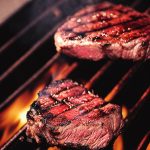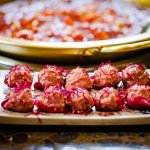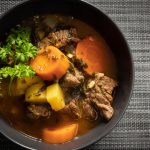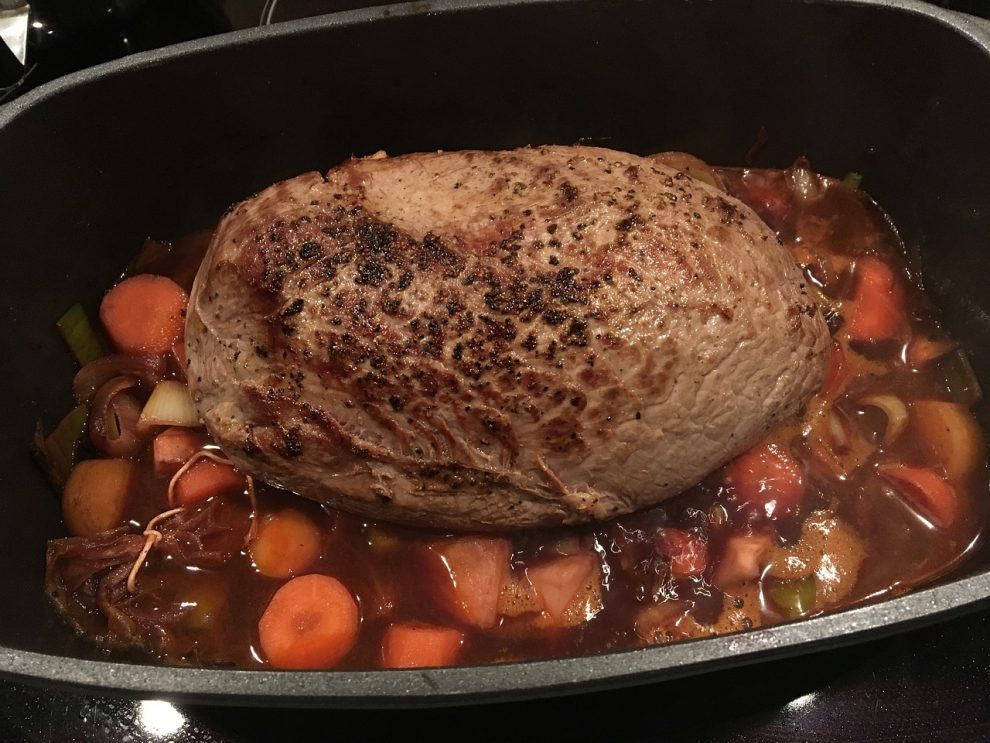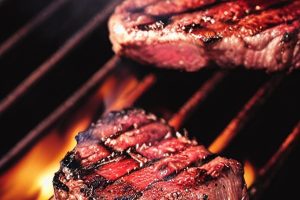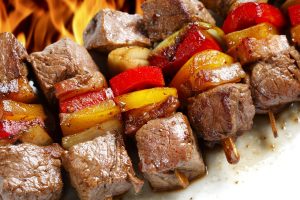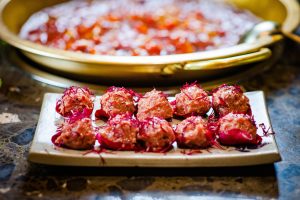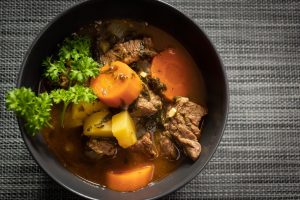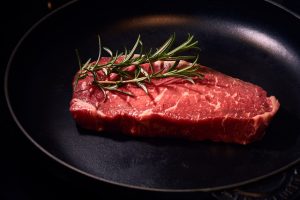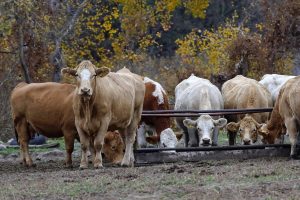The Origins and Symbolism of Moo Shu Beef in Chinese Festivals
Moo Shu Beef is a popular dish that originated in Northern China and has become a symbol of celebration and prosperity in Chinese festivals. This article will explore the origins and symbolism of this dish, shedding light on its significance and cultural importance.
The origins of Moo Shu Beef can be traced back to the Han Dynasty (206 BC – 220 AD) in Northern China. It was originally made with pork, but later evolved to include beef as well. The dish is traditionally prepared by stir-frying thin slices of beef with various vegetables such as cabbage, mushrooms, carrots, and bamboo shoots. The ingredients are then seasoned with soy sauce, ginger, garlic, and other spices, giving the dish its distinct flavor.
Moo Shu Beef has deep-rooted symbolism in Chinese festivals. It is often associated with the Lunar New Year, also known as Spring Festival, which is the most important and widely celebrated festival in Chinese culture. The dish is believed to bring good luck and prosperity for the coming year. The use of beef in Moo Shu Beef symbolizes strength and abundance, while the vegetables represent growth and renewal. The combination of these ingredients signifies a wish for a prosperous and fruitful year ahead.
In addition to its symbolism during the Lunar New Year, Moo Shu Beef is also commonly served during other festive occasions such as weddings, birthdays, and family gatherings. It is considered a dish of great significance and is often included in the menu to symbolize happiness, unity, and good fortune. The communal nature of Moo Shu Beef, where it is typically shared among family and friends, reinforces the idea of togetherness and harmony during these special occasions.
Furthermore, Moo Shu Beef is not only valued for its symbolism but also for its nutritional value. The dish is low in fat and high in protein, making it a healthy choice for those looking to maintain a balanced diet. The inclusion of a variety of vegetables provides essential vitamins and minerals, contributing to overall well-being.
In conclusion, Moo Shu Beef holds great cultural significance in Chinese festivals. Its origins in Northern China, its symbolism of prosperity and abundance, and its nutritional value make it a cherished dish during festive occasions. Whether it is enjoyed during the Lunar New Year or other celebrations, Moo Shu Beef brings joy, unity, and good fortune to those who partake in its flavors.
Unveiling the Cultural Traditions Associated with Moo Shu Beef in Chinese Celebrations
Moo Shu Beef, a delicious and popular dish in Chinese cuisine, holds a significant place in Chinese celebrations. This traditional dish is not only known for its mouthwatering flavors but also for its cultural significance. In this article, we will delve into the cultural traditions associated with Moo Shu Beef in Chinese celebrations, providing an informative and formal perspective.
Chinese celebrations are steeped in rich cultural traditions that have been passed down through generations. These traditions play a vital role in bringing families and communities together, fostering unity and happiness. One such tradition is the inclusion of Moo Shu Beef in celebratory meals.
Moo Shu Beef is a stir-fried dish that typically consists of thinly sliced beef, shredded vegetables such as cabbage, carrots, and mushrooms, all cooked with a flavorful sauce made from soy sauce, hoisin sauce, and other spices. This dish is often served with delicate pancakes or steamed buns, allowing the diners to wrap the beef and vegetables in the pancake or bun, creating a delectable and interactive dining experience.
The presence of Moo Shu Beef in Chinese celebrations symbolizes abundance, prosperity, and good luck. The main ingredient, beef, represents strength and nourishment, while the variety of vegetables symbolizes health and fertility. The inclusion of these ingredients in celebratory meals is believed to bring good fortune and happiness to the participants.
Furthermore, the interactive nature of Moo Shu Beef adds an element of fun and togetherness in Chinese celebrations. The act of wrapping the beef and vegetables in the pancake or bun allows family members and friends to engage in conversations and share laughter while enjoying their meal. This communal dining experience fosters a sense of unity and strengthens familial ties.
In addition to its cultural significance, Moo Shu Beef is also known for its health benefits. The dish is low in fat and high in protein, making it a nutritious choice for celebratory meals. The abundance of vegetables adds essential vitamins and minerals to the dish, promoting overall well-being.
Chinese celebrations, whether it be Chinese New Year, weddings, or other festive occasions, are incomplete without the presence of Moo Shu Beef. This dish not only tantalizes the taste buds but also serves as a symbol of cultural traditions, unity, and good fortune. The inclusion of Moo Shu Beef in celebratory meals showcases the importance of preserving and cherishing Chinese customs in modern times.
In conclusion, Moo Shu Beef holds a significant place in Chinese celebrations due to its cultural traditions and symbolic meaning. This dish not only satisfies the palate but also brings abundance, prosperity, and good luck to celebratory gatherings. The interactive nature of Moo Shu Beef encourages togetherness and strengthens familial bonds. So, the next time you indulge in this flavorsome dish, remember the cultural heritage and traditions it represents.
Moo Shu Beef: A Delightful Culinary Experience during Chinese Festivals
Moo Shu Beef is a scrumptious Chinese dish that is often enjoyed during festive occasions. With its rich flavors and unique presentation, it offers a delightful culinary experience that is sure to please even the most discerning palates. This article will provide you with an informative overview of Moo Shu Beef, highlighting its origins, ingredients, and traditional preparation methods.
Originating from Northern China, Moo Shu Beef has a long history and is deeply rooted in Chinese culinary traditions. It is believed to have been created during the Tang Dynasty and has since become a popular dish during Chinese festivals, including the Spring Festival and the Mid-Autumn Festival.
The key ingredient in Moo Shu Beef is, of course, beef. The meat is typically marinated in a mixture of soy sauce, rice wine, and various spices to enhance its flavor. It is then thinly sliced and stir-fried with an assortment of vegetables, such as cabbage, mushrooms, and carrots. This combination of ingredients creates a harmonious balance of textures and tastes that is both satisfying and delicious.
One of the defining features of Moo Shu Beef is its unique presentation. The stir-fried beef and vegetables are traditionally served wrapped in thin pancakes made from wheat flour. The pancakes are soft and pliable, allowing you to easily enclose the filling within them. To enjoy this dish, you simply spread a layer of hoisin sauce onto the pancake, add the beef and vegetable mixture, and then roll it up like a burrito. The result is a delightful combination of flavors and textures that is as visually appealing as it is tasty.
In addition to its delectable taste, Moo Shu Beef also offers several health benefits. Beef is a great source of protein, iron, and various vitamins and minerals. The vegetables used in this dish provide essential nutrients and add a refreshing crunch. By stir-frying the ingredients, the dish retains much of its nutritional value, making it a healthy and satisfying choice for any festive occasion.
In conclusion, Moo Shu Beef is a delightful culinary experience that is often enjoyed during Chinese festivals. Its origins, ingredients, and traditional preparation methods all contribute to its rich flavors and unique presentation. Whether you are celebrating the Spring Festival or simply looking to indulge in a delicious Chinese dish, Moo Shu Beef is a must-try. So, gather your loved ones, savor the flavors, and immerse yourself in the culinary delights of this festive Chinese delicacy.
Exploring the Role of Moo Shu Beef in Strengthening Family Bonds during Chinese Celebrations
Moo Shu Beef, a popular Chinese dish, has been known to play a significant role in strengthening family bonds during Chinese celebrations. With its rich history and cultural significance, this dish brings families together to enjoy a delicious meal while fostering a sense of unity and harmony.
Chinese celebrations, such as Lunar New Year and Mid-Autumn Festival, are deeply rooted in family traditions and customs. These occasions provide an opportunity for family members to come together, reconnect, and reinforce their relationships. Moo Shu Beef, often served as a main dish during these festivities, serves as a symbol of togetherness and shared experiences.
The preparation and consumption of Moo Shu Beef involve a collaborative effort, encouraging family members to work together in the kitchen. Traditionally, the dish consists of tender strips of beef stir-fried with a medley of vegetables, including cabbage, mushrooms, and carrots. The ingredients are then wrapped in thin pancakes, creating a delicious and visually appealing meal.
The process of assembling Moo Shu Beef requires teamwork and coordination. Family members take turns spreading hoisin sauce on the pancakes, layering the beef and vegetable mixture, and rolling them into neat bundles. This hands-on activity not only allows family members to bond over a common task but also encourages communication, cooperation, and the sharing of culinary knowledge and techniques.
The act of sitting down together to enjoy Moo Shu Beef further strengthens family bonds during Chinese celebrations. Sharing a meal is considered a sacred and meaningful tradition in Chinese culture, symbolizing unity and harmony within the family. As family members gather around the table, they engage in conversations, share stories, and create lasting memories.
Moo Shu Beef, with its flavorful combination of ingredients, also carries symbolic meanings that enhance the familial significance of Chinese celebrations. The beef represents strength and prosperity, while the vegetables symbolize abundance and good fortune. Consuming this dish during festive occasions is believed to bring luck and blessings to the family, further reinforcing the importance of togetherness and familial ties.
In conclusion, Moo Shu Beef plays a vital role in strengthening family bonds during Chinese celebrations. Its preparation and consumption involve a collaborative effort that encourages communication and cooperation among family members. Furthermore, the symbolic meanings associated with this dish add a deeper layer of significance to the familial traditions and customs observed during these joyous occasions. By partaking in the shared experience of enjoying Moo Shu Beef, families can strengthen their relationships, create lasting memories, and celebrate the unity and harmony that Chinese celebrations represent.
The Evolution of Moo Shu Beef as a Cultural Icon in Chinese Festivals
Moo Shu Beef is a dish that has become an iconic part of Chinese festivals and celebrations. Over the years, it has evolved and gained cultural significance, representing the rich culinary heritage of China. This article will delve into the origins and development of Moo Shu Beef as a cultural icon, highlighting its importance in Chinese festivals.
Moo Shu Beef traces its roots back to the Northern Chinese cuisine, particularly originating from the Shandong province. The dish traditionally consists of tender beef strips stir-fried with various vegetables such as mushrooms, cabbage, and bamboo shoots, all wrapped in a thin pancake-like wrapper made from flour and eggs. The dish is typically seasoned with soy sauce, ginger, garlic, and other traditional Chinese spices, giving it a distinctive and flavorful taste.
The popularity of Moo Shu Beef grew steadily over time, becoming a staple dish during Chinese festivals. The dish’s versatility and ability to cater to different tastes and dietary preferences contributed to its widespread appeal. During festivals, families would gather to prepare and enjoy this dish together, symbolizing unity and togetherness.
As Moo Shu Beef gained popularity, it began to be associated with specific Chinese festivals, such as the Spring Festival (Chinese New Year) and the Mid-Autumn Festival. These festivals are deeply rooted in Chinese culture and are celebrated with great enthusiasm and joy. Moo Shu Beef became an essential part of the festive feasts, symbolizing prosperity, good luck, and abundance.
The cultural significance of Moo Shu Beef in Chinese festivals goes beyond its culinary appeal. The dish embodies the values and customs that are deeply ingrained in Chinese culture. Symbolically, the thin pancake-like wrapper represents harmony and balance, while the tender beef symbolizes strength and good fortune. The various vegetables used in the dish represent diversity and the importance of unity within a community or family.
In recent years, Moo Shu Beef has also gained international recognition and popularity. Chinese cuisine has become increasingly popular worldwide, and dishes like Moo Shu Beef have found their way onto menus in Chinese restaurants globally. This global recognition has further solidified the cultural significance of Moo Shu Beef, making it not only a Chinese festival staple but also a representation of Chinese culinary heritage.
In conclusion, Moo Shu Beef has evolved into a cultural icon in Chinese festivals, symbolizing unity, prosperity, and good fortune. Its origins in Northern Chinese cuisine, its association with specific festivals, and its recognition on an international scale all contribute to its cultural significance. As Chinese festivals continue to be celebrated worldwide, Moo Shu Beef will undoubtedly remain a cherished dish, representing the rich cultural heritage of China.
